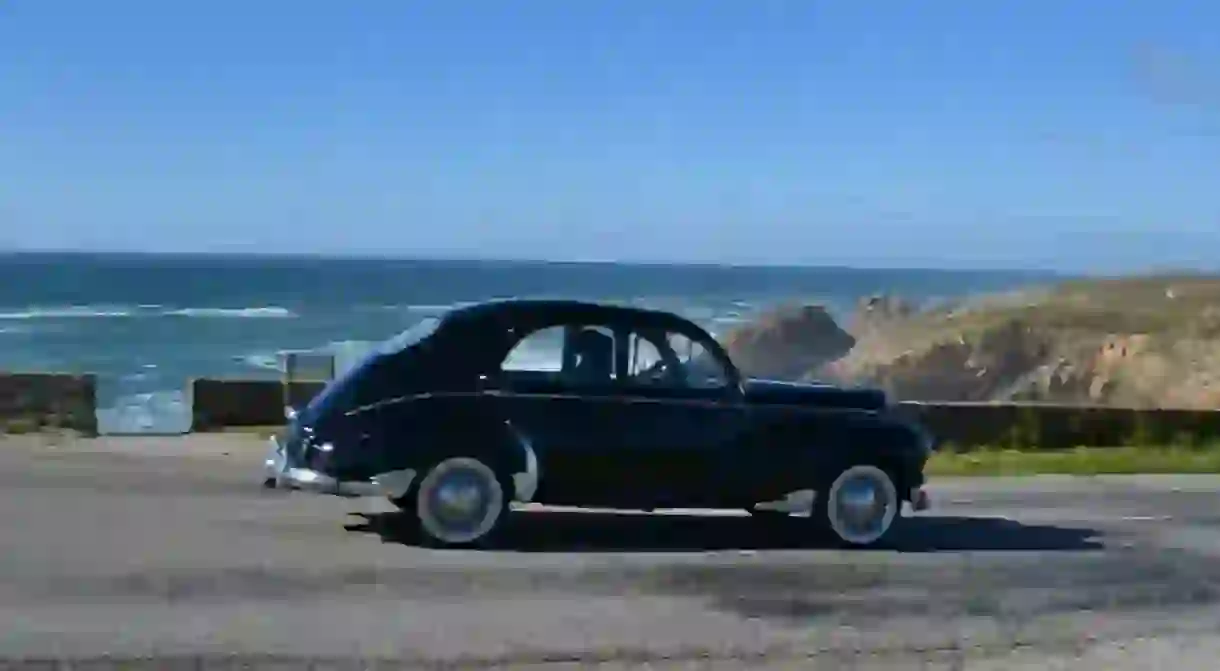France's Most Scenic Roads: Brittany’s Côte Sauvage

As you drive, bike or walk in the department of Morbihan in the south of Brittany, there is a small Peninsula called Presqu’île de Quiberon. On the west side of it, for only a few kilometers, lies one beautiful road, right along the ocean coast. With high cliffs, sandy corners, sunsets and seagulls, the road follows the movement of the sea and displays spectacular views.

Located between Lorient and Vannes, the Presqu’île de Quiberon is one of the most visited spots of Southern Brittany during the summer.
Starting point: Portivy

Portivy, a small harbor town in the Quiberon Peninsula, is home to the starting point of the Cotê Sauvage road in Brittany. The road, suitable for cycling, driving and walking, begins just as you exit the town and take a left turn, with Pointe du Perchon just in front of you. This place is home to a great overview look of the coast to the south.

Lots of camping sites and gîtes (bed and breakfasts) can be found in the town.
To the north of the town, at Saint Pierre de Quiberon, is the Isthme de Penthiévre, with the Fort of the same name dominating the area. There you can see the contrast between high waves on the west side and a totally calm sea just ten meters on the other side to the east.

Arche de Port Blanc

The Arche de Port Blanc is found on the coast. The beach breaks the cliffs as well as the waves and with time, the arch was formed. Connecting the sea to the land, the arch is usually the most-used landscape to promote the Cotê Sauvage.
Biking is allowed on the road and sometimes special bike lanes exist that are situated a bit further from the traffic, so you can bike calmly without worrying. However, the trails that go by the cliffs are only for walking and hiking and forbidden for bikers because of the dangers that may occur with all the sand and slippery rocks around.
Port Barra

The Menhirs
Menhirs are the vertical neolithic rocks usually found in the Celtic countries, including Brittany (similar to the Stonehenge ones). If you are on the bike path on Cotê Sauvage, at one point you will spot one or two neolithic archaeological sites, which makes the road even more magical.

Pointe de Kervihan

Stop yourself from taking a swim while at the beach in this area. Even though they seem welcoming and so pleasant, they are home to some of the ocean’s most dangerous currents. It is not recommended to take a swim, even though at times you can see people trying to surf. Most beaches are unsupervised in the area.

Beg Er Goalennec

Following the road you reach Beg Er Goalennec. Don’t worry, you don’t have to remember all the Breton names, but you will recognize this area because of the two restaurants that are there: Les Mouettes and Le Vivier. They are highly successful because they have the best sunset views of the area. Going out on the cliffs gives you a great view of the road and of the ocean in front of you. The sun sets behind the small yachts passing by. If you’re lucky enough, on a clear day, the entire coast of Southern Brittany can be seen, with the city of Lorient on the horizon.

We recommend stopping here for the sunset, otherwise the experience of visiting Côte Sauvage is not complete.
End at Quiberon
With this we are approaching the end of the Côte Sauvage. The cliffs get smaller, the road becomes straighter and one last beautiful view appears: Château Turpault.

This old château is right on the corner of the peninsula of Quiberon. It is a windy place, with waves crashing on each side of the rocks. The building still stands though, defeating the elements of nature and the passing of time. It is also a suitable finish to a magical road trip.

The chateau was built by Georges Turpault, an inhabitant of the area in 1904 for his use and has an Anglo-medieval architectural style. It was baptized the Château de la mer (Castle of the Sea).

If you want to continue a bit more, you can visit the beach of Quiberon, right beside the old harbor where departures to the islands of Belle île and Houat can be found.

From there, it is up to you to decide whether you want to grab a coffee at one of the beautiful cafés located along the sea or simply, go back and enjoy the sea on the Côte Sauvage de Quiberon.













